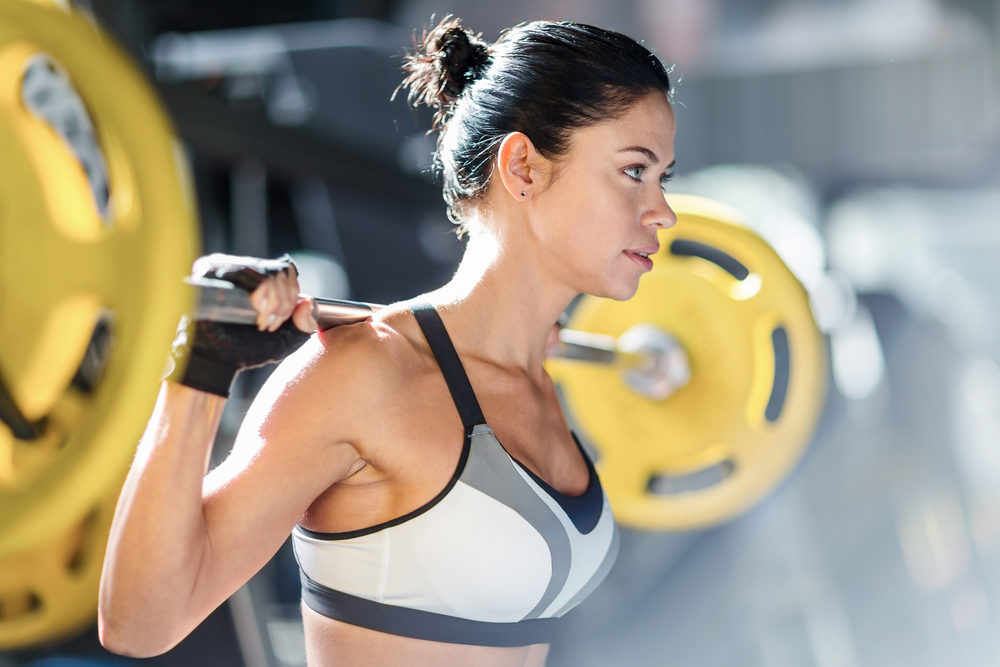If you’re a weightlifter, don’t ignore an aching shoulder. Follow our tips to prevent and treat these three common conditions.
Experiencing shoulder pain while weightlifting? This might be a sign you need to take a step back and re-examine your form. Here are some ways to prevent your slight twinge from turning into a serious injury.
WEIGHTLIFTER’S SHOULDER
Weightlifter’s shoulder, or distal clavicular osteolysis, affects the collarbone where it meets the shoulder blade at a point known as the acromion. This joint is very flexible, and therefore one of the least stable in the body. Stress over time can lead to micro fractures on the end of the collarbone.
If you have weightlifter’s shoulder, you may experience:
- Dull aching
- Tenderness or sharp pain when you press on the area
- Swelling
- Weakness or stiffness
- Pain after exercising
- Pain when you extend the arm across to the opposite side
Weightlifter’s shoulder can be avoided with good training practices. It is usually caused by overdoing shoulder extension exercises like bench presses, dips, or push-ups. When you work out, be sure not to use too much weight and give your muscles time to recover in between training sessions. Have a trainer check your form, and be careful not to push through when you’re experiencing pain. To build up your shoulder strength, try out the “Blackburn” exercise.
If you are suffering from weightlifter’s shoulder, the condition may respond to conservative treatment. Take a hiatus from lifting weights, ice the area, and take anti-inflammatory medications. Your doctor may suggest corticosteroid injections along with physical therapy. If surgery is needed, your doctor can perform a minimally invasive procedure using small incisions to remove about a centimeter of your collarbone, which will help eliminate pain and restore your range of motion.
SHOULDER IMPINGEMENT
Shoulder impingement affects the rotator cuff in the upper arm. Each time you raise your arm, you create less space between the tendons and the shoulder blade. Over time, the shoulder blade’s acromion may begin to irritate the rotator cuff or its bursa sac.
Motions that use the rotator cuff tendons increase the likelihood of impingement. This includes any sport with overhand motions or exercises that include lifting weights above the head. Many people don’t realize that the mild pain is a sign of impingement, and unfortunately don’t seek treatment until the pain has worsened.
You may have a shoulder impingement if you experience:
- Swelling or tenderness
- Pain whether you’re resting or exercising
- Sharper pain when lifting or reaching
- Weakness and loss of motion
- Difficulty reaching behind your back
There are several ways that you can prevent this condition. If you’re just starting a training plan, add reps slowly and trade off between push and pull exercises to build both front and back muscles (i.e., for every pushup, do a row). Avoid overdoing exercises where the elbow is above the shoulder, like upright rows and shoulder presses, along with lateral raises and behind-the-neck pulldowns. For more stability, activate your lower trapezius muscles before pulldowns by bringing your shoulders down and together.
If you do experience shoulder impingement, we recommend temporarily replacing your weightlifting regimen with physical therapy. Your doctor may suggest cortisone injections as well. These conservative treatments are often sufficient, but if needed a doctor can perform surgery to remove or repair the damaged areas. This can prevent future injury to the tendons, especially if you have bone spurs.
ROTATOR CUFF TEAR
A rotator cuff tear affects the muscles and tendons that cover your upper arm bone, keep it in the ball-and-socket shoulder joint, and help you lift and rotate your arm. The stress of weightlifting can cause a tear as the tendon degenerates over time. Direct impact can cause damage as well — if you try to lift heavy weights with a jerking motion, you could tear the tendons.
You may have a torn rotator cuff if:
- Your pain is worse when you raise your arm overhead
- Pain makes it hard to sleep at night
- You experience weakness and limited motion in your shoulder
- You are unable to hold your arm at shoulder level without dropping it to your side
To prevent this injury, use lower resistance exercises with more repetitions to gradually strengthen the rotator cuff muscles. Balance these exercises with arm raises and external rotations to build up your deltoids — try the side-lying external rotation before your next workout. End your training session with cold compresses to reduce inflammation, and be sure to rest between gym days. Avoid sleeping on your sore side to help healing. The condition won’t go away on its own, but our expert orthopedists at New York Bone & Joint Specialists can diagnose your condition and get you started on the path to healing. Schedule an appointment with one of our orthopedic specialists today.




